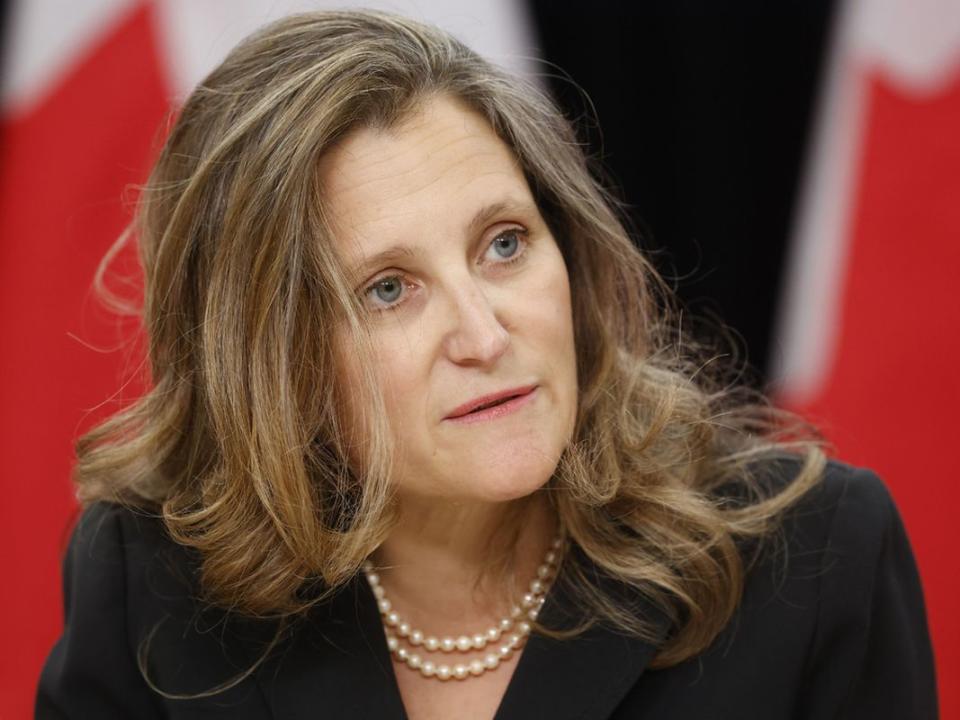Matthew Lau: Ottawa should report its financials as fast as banks do, not 6 times slower

It’s now October, which means Canada’s federal and provincial governments, whose fiscal years end March 31st, are now into the second half of the 2023-24 fiscal year. Confirming its notorious inefficiency and lack of financial accountability, the federal government has yet to publish its 2022-23 public accounts.
How long is it supposed to take? The private sector is a useful measuring stick: Canada’s Big Six banks have an Oct. 31 fiscal year-end and publish their annual results by December 1st or earlier. A rule of thumb, used by Milton Friedman among others, is that government is so inefficient it spends about twice as much money as the private sector to accomplish the same thing. When it comes to financial reporting, apparently, the rule is it takes the federal government more than sixfold the time.
Not all governments are quite as bad as the federal government. The Quebec government is also historically a laggard, but Alberta and Saskatchewan released their public accounts back in June. British Columbia published its at the end of August. Manitoba and Ontario both took half a year, finally releasing their 2022-23 public accounts in the final week of September. Perhaps it’s not surprising that Ontario’s government is among the slowest to publish financial statements: after the federal government, it’s the biggest spender. It must take a lot of time to figure out where all the money went.
“All the money” in the case of Ontario turned out to be $198.8 billion in 2022-23, up from $183.1 billion in 2021-22. The biggest-ticket items, as always, were health at $78.5 billion and education at $34.5 billion. Next were the children’s and social services sector at $18.1 billion and debt interest at $12.4 billion. Critics of government profligacy often point to the big debt interest cost to draw public attention to government overspending, and indeed, taxpayers should be displeased that borrowing has created such a big expense. On the other hand, while most government spending is actively harmful — spending twice as much as necessary to do things is value-destroying — interest payments to bondholders are relatively benign. If taxpayers are unhappy paying $12.4 billion in interest expenses, they should be even unhappier about the Ontario government’s $11.6 billion in post-secondary education spending.
Not included in the $198.8 billion were the Ontario government’s share of the multi-billion dollar Volkswagen and Stellantis battery-plant blowouts, the subsidies for which were announced this fiscal year, not last. Even so, Ontario’s public accounts reveal significant corporate welfare, including abundant evidence of the government’s ongoing auto sector subsidy addiction. The ministry of economic development, job creation and trade gave $75 million in handouts to General Motors of Canada, $33 million to Honda Canada, and $22 million to Ford Motor Company. Treasury Board President Caroline Mulroney’s foreward to the public accounts highlights a $364-million increase (repeat: not total spending, but a one-year increase) in “investments to support the province’s growing automotive manufacturing sector.”
Proving there is no cost that government won’t pile onto taxpayers’ backs in the name of “economic development,” the list of handouts includes $39 million to video-game developer Ubisoft, as well as seven-figure sums to Sanofi Pasteur (pharmaceuticals), Maple Leaf Foods (meat), Linamar (manufacturing), Nokia Canada (telecommunications and electronics), and Dr. Oetker (pizza and baking products), among many other companies.
Another notable feature of government spending is the money spent to achieve conflicting goals. For example: the ministry of health gave $338 million in transfer payments to various health organizations and centres to pay for addiction programs — even as the ministry of agriculture, food, and rural affairs gave $4.7 million to the Wine Marketing Association of Ontario, the LCBO spent $6.9 million on advertising, and various government ministries gave six-figure handouts to a dozen wineries, breweries and wine festivals.
The federal government’s financial statements, when they are finally released, doubtless will show the same overspending, waste, and inefficiency — except on a larger scale. The last federal fiscal update, back in March, estimated 2022-23 spending at $480 billion. Now, more than six months after that fiscal year ended, it is time for the federal government to tell us exactly what the number was and where the money all went.
Matthew Lau is a Toronto writer.
